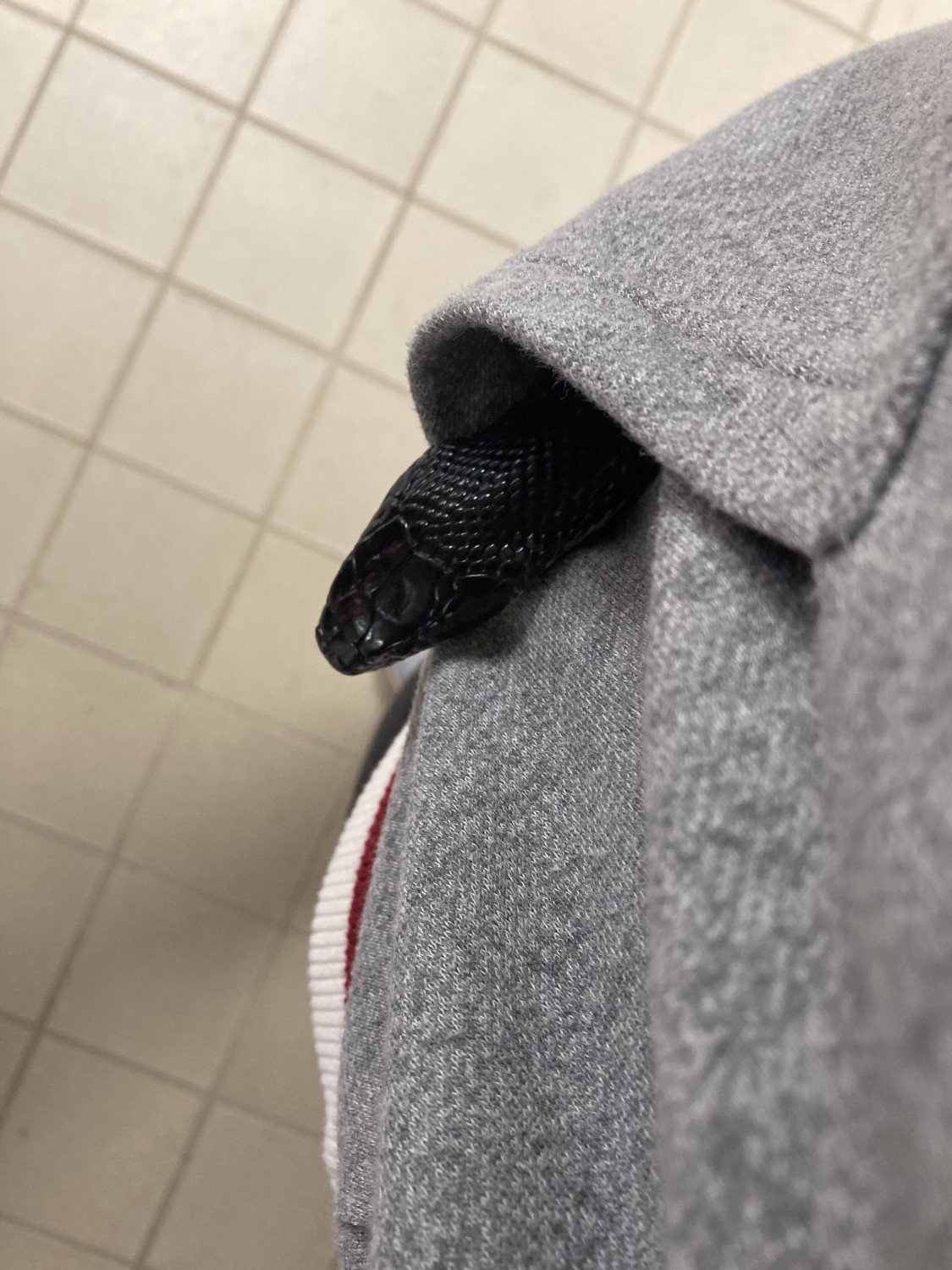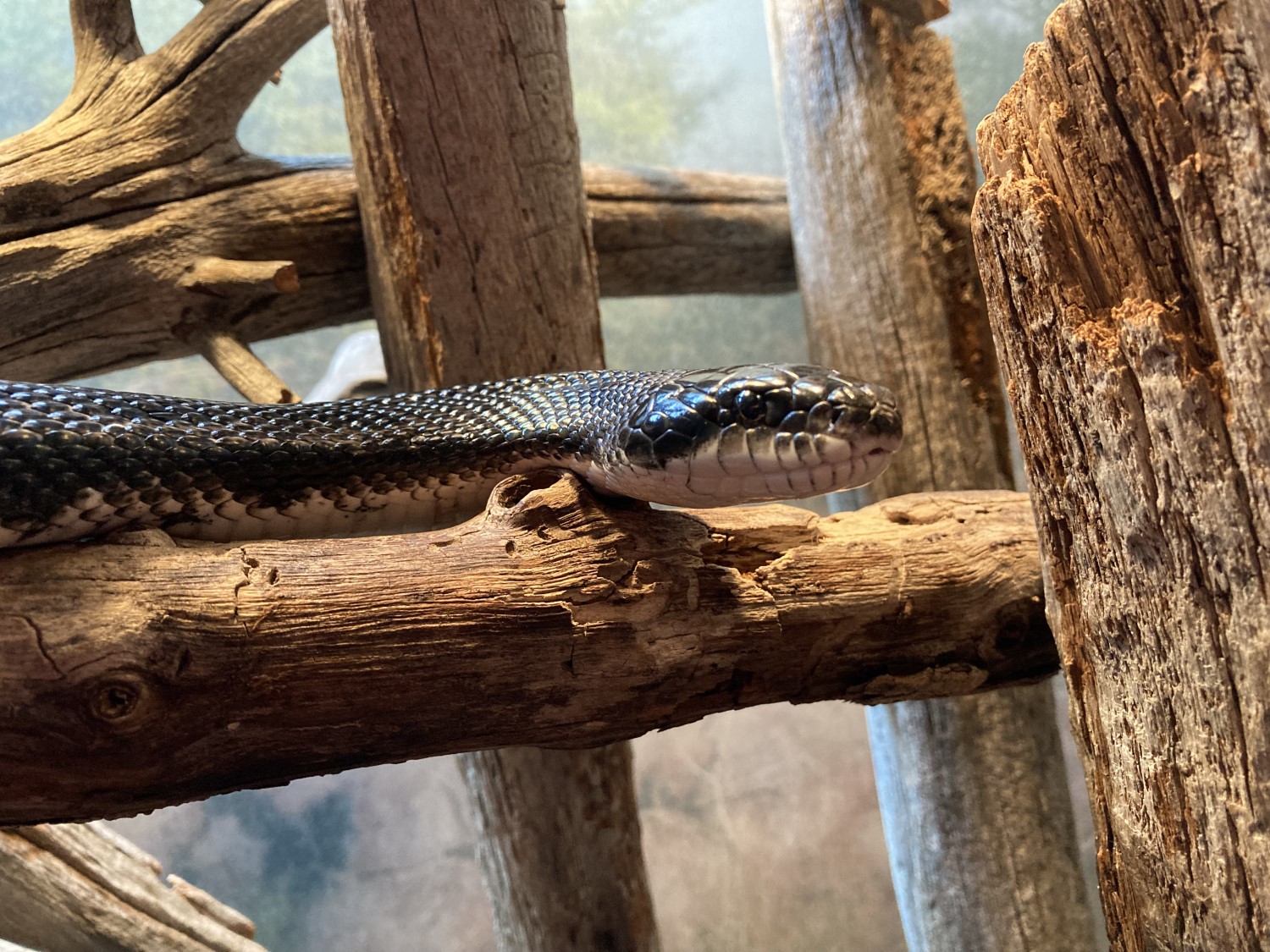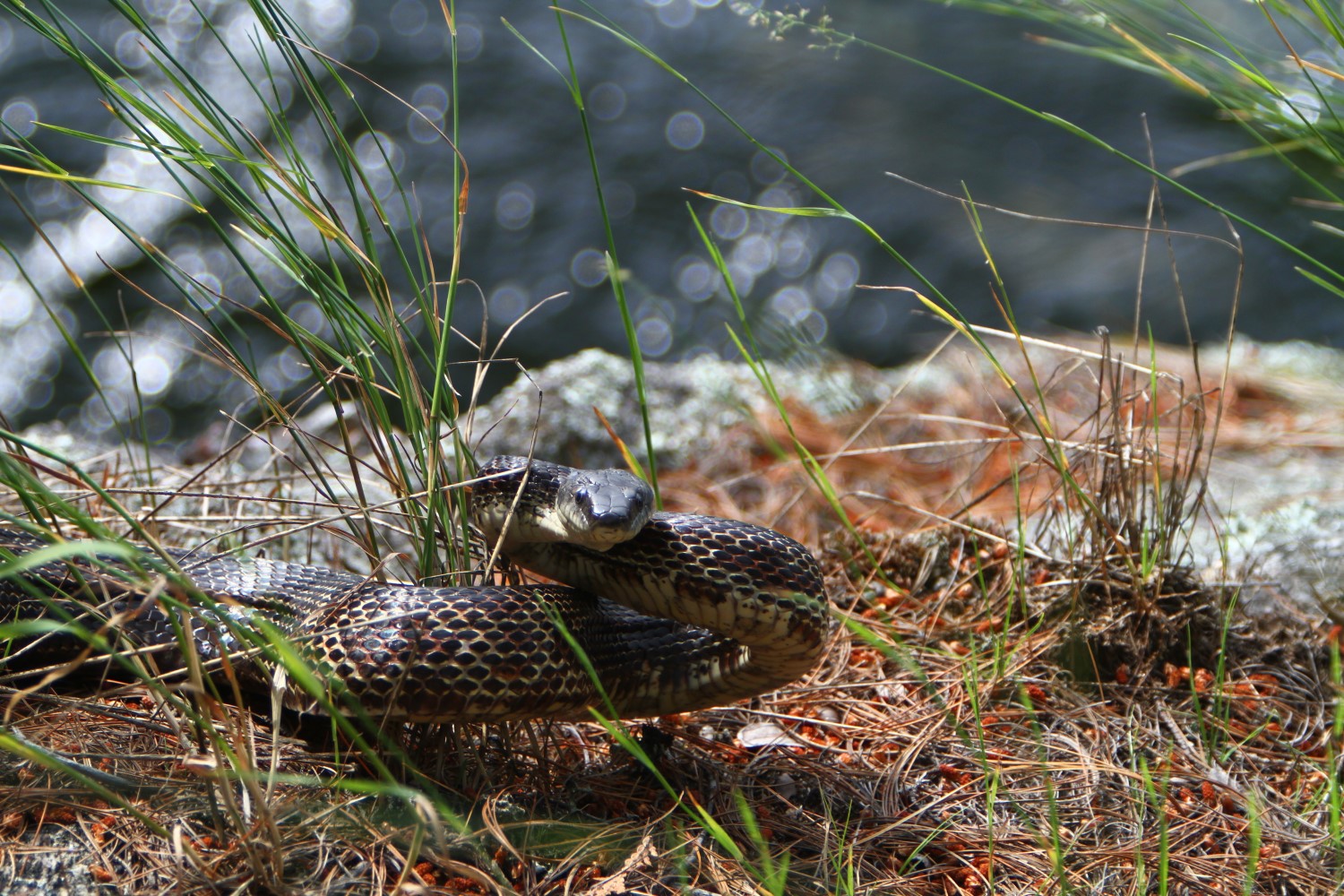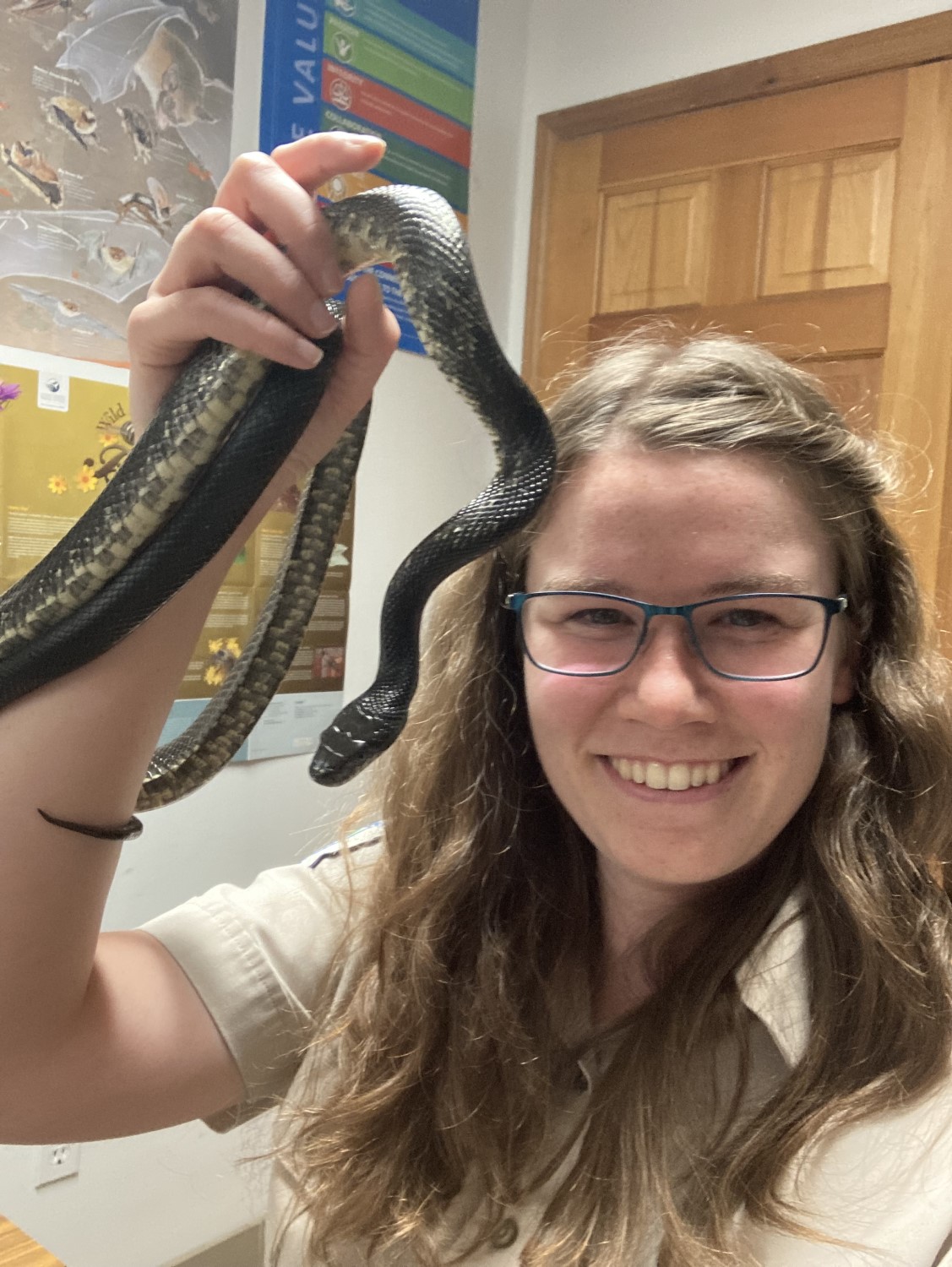Today’s blog comes to us from Sam Alison, former Ontario Parks Gray Ratsnake researcher at Murphys Point Provincial Park.
I must admit, as a seven year old, I was a little nervous about spending the night at my great grandmother’s cottage. At the family reunion, I had heard all about the seemingly mythical creature that lived in the attic…
…a creature so good at hiding, you’d never know where it was at any point in time.
…a creature so long, it could reach right around the door frame if it wanted to.
…a creature so mesmerizing, that everyone had a story to tell.
What was this creature? Where was it? I was hooked.
I spent our family vacation looking for this legend. Little did I know, this adventure would inspire my future career.
A university degree and many years later, I’m still searching for Canada’s longest snake species – the Gray Ratsnake.
The girl and the willow
Truth be told, in the beginning I was as unsure of our cottage residents as I was excited by them.
After a fruitful search, I discovered that Gray Ratsnakes liked to lounge in the most inconvenient locations, like over top of the door frame you were hoping to walk through.
This behaviour was strange to me and I couldn’t understand why they acted as they did. I wasn’t necessarily afraid of snakes, but I was wary of them.

I would have felt this way for a long time, if it wasn’t for a new friend I made as I began my career in parks.
In my first year of university, I was hired by Thousand Islands National Park to run their Visitor Centre for the summer.
Central to my role was caring for a timid Gray Ratsnake named Willow. I saw this as my chance to learn how to interact with the creature that had been such a mystery in my childhood.

After some lessons on snake care and handling, I soon found myself letting my guard down. Willow was fascinating to care for, and I started to get a feel for her likes and dislikes.
She loved hoop earrings, pockets, long hair, and playing in the sandbox. When the Visitor Centre was busy and she was overwhelmed, she would gently squeeze my arm to let me know it was time for a break.
But most of all, she had a knack for mischief, seeking opportunities to weave herself into positions she knew would be near impossible for me to remove her from.
Whether it was a trip down the back of my shirt during a presentation, or a decision to slither through all my belt loops at once, there was never a dull moment.
A personal connection
I left my summer with Willow feeling inspired to learn more. This led me to enroll in a herpetology internship after my undergrad.
I spent a semester at Scales Nature Park, working with their various herptiles (reptiles and amphibians), including ratsnakes. It was while at this zoo, that I realized there was something unique about working with snakes.

They could be frustrating, adorable, smelly, and entertaining all at once. It amazed me that each snake, although identical, could have its own set of likes and dislikes that set it apart. It was quite a revelation for me, that such a seemingly expressionless, voiceless creature could have a “personality.”
My scientist colleagues will likely cringe at this personification, but I have no other way of describing these attributes.
I had thought snakes were cold, stand-offish creatures, but I was wrong. Once you’ve seen the way a snake’s behavior mirrors your own, you can’t help but feel attached.
Let me introduce you…
Take Gray Ratsnakes, for example. I’ve noticed their childlike sense of wonder, as they explore new nooks and crannies in their habitat.
When faced with challenges, determination kicks in. They can be as stubborn as all get out, ready to stand their ground against even the largest and scariest predators.

Yet, Gray Ratsnakes are calm, preferring to spend their time resting in the glow of a sunbeam. It’s an incredible duality to be peaceful, childlike, and yet have a mature, well-developed determination and bravery.

I soon found this to be true of wild ratsnakes as well, while leading the Gray Ratsnake Monitoring Program at Murphys Point Provincial Park.
Sure, wild ratsnakes are not always happy to see you. They are quick to scare you away with a rattlesnake act, and biting is always a possibility. But once the snake is over its initial fear of being picked up, it becomes quite docile.*
There isn’t much difference between a wild ratsnake in hand, and a captive one. If you know how to read their behaviour and handle them with care, you really can’t go wrong.
A lifelong lesson
When I look back, it has been an incredible journey to go from ghost hunter to ratsnake researcher.
Where I once felt a sense of unease now all I feel is excitement, to meet the next ratsnake and learn “who” it is, as an individual. It has taken a lot of training and education to reach this stage, and I had no idea that years after those first encounters, I would be helping others overcome their fear, too.
I’m grateful to have had a role at Murphys Point Provincial Park, where I was able to help protect Gray Ratsnakes and share my story as well. From daily snake talks to candid trailside conversations, it was a privilege to introduce others to the snakes that I call friends.
Friends that are in trouble of disappearing forever. Gray Ratsnakes are a species at risk. A species at risk of no longer existing in nature; only being kept alive by the stories of ghosts in the attic.

I hope that you, too, will consider your story, keeping in mind its flexibility and impact. Stories of fear can be transformed, and stories of joy can be revolutionary when shared.
When it comes to Gray Ratsnakes, where do you stand?
This is the fifth edition of our 2023 species-at-risk series.
Read our previous edition: From the abundant to the rare, parks protect them all.
Why are your scientists picking up wildlife? Can I pick up snakes and turtles too?
Please do not handle birds, mammals, or reptiles unless you are helping to safely move them off the road. The staff members featured here are trained biologists engaged in professional research. These biologists are following a strict animal care protocol approved by the Ministry of Natural Resources and Forestry. These protocols review the desired outcome of the research, and ensure measures are taken to put the least possible amount of stress on the animal. We ask that you always observe animals from a distance for both the safety of you and the animal.
